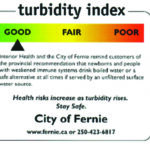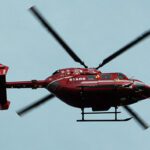Home »

Spring means more wildlife on road, more crash risk
Drivers reminded to be on alert. ‘Animals don’t follow traffic rules.’
Spring brings longer days, greener roadsides — and a sharp rise in wildlife on the move. Road Safety at Work urges drivers to watch for animals crossing roads during peak wildlife activity periods.
“Animals don’t follow traffic rules,” said Trace Acres, program director at Road Safety at Work. “Even a small deer can cause a serious crash, and it often happens before the driver has time to react.”
Hitting a large animal at any speed can put lives at risk. In 2023 in BC, 1,070 injuries resulted from 12,825 crashes where animals were involved, according to ICBC statistics.
Annual average of vehicle/wildlife incidents per region for last 5 years (2019-2023)*
| Region | Incidents | Injuries |
| Southern Interior (Includes the southern third of the province, including the Kamloops area, Okanagan and Kootenay regions, as far west as Boston Bar and Lillooet) | 5,086 | 439 |
| North Central (Includes the central Interior as far south as 100 Mile House, the Peace River district, Prince Rupert and Haida Gwaii, and all points north) | 2,989 | 255 |
| Vancouver Island (Also encompasses the Gulf Islands and the mainland coastal community of Powell River) | 2,207 | 185 |
| Lower Mainland (Includes the entire south-west corner of mainland B.C., from Pemberton to Boston Bar, the Fraser Valley, Greater Vancouver, and southern Sunshine Coast) | 1,239 | 110 |
*ICBC Quick Statistics – Crashes involving | Tableau Public
“The best way to protect yourself is to stay alert, slow down, and be prepared for the unexpected,” Acres said.
The risk of wildlife collisions increases in spring and summer as animals become more active. Their movement patterns shift due to feeding and mating cycles, often bringing them closer to roads.
In May, drivers are more likely to encounter deer. Moose activity increases in June and July.
Crashes are most common during dawn and dusk (roughly between 6 to 8 a.m. and 5 to 8 p.m.). That’s when animals are on the move and visibility can be a challenge due to sun shining in your eyes. High-risk areas include highways and roads that link rural and suburban areas, especially near green belts, parks, fields, golf courses, or other natural feeding areas.
What drivers can do
Acres says reducing the risk starts with preparation and awareness. “You can’t predict what an animal will do but you can adjust your driving to lower your chances of a crash.”
Drivers are encouraged to:
- Plan routes to avoid key wildlife areas during high-risk times or choose safer travel times.
- Stay alert and watch for animal crossing signs. They’re posted along roads where wildlife are often seen.
- Slow down when you see an animal on the side of the road. Others may be nearby.
- Scan roadsides and ditches for movement, especially in low light.
- Avoid swerving around an animal, which can lead to more serious crashes.
- Warn other drivers about the presence of wildlife by using four-way flashers or flashing your headlights.
“Even seasoned drivers get caught off guard,” Acres said. “The safest thing you can do is to drive in a way that gives you more time and space to react.”
What employers can do
For the hundreds of thousands of British Columbians who drive as part of their job, wildlife collisions are just one of many risks on the road. Motor vehicle crashes remain the leading cause of traumatic workplace deaths in B.C. Yet most crashes can be prevented, through training, education, and supervision.
Employers can help protect employee who drive occasionally, part time, or full time by:
- Addressing wildlife hazards in safe driving policies, noting when and where collisions are most likely and how drivers are expected to respond
- Providing training on how to avoid collisions
- Using trip planning to avoid high-risk areas
For more tips on driving safely for work or pleasure, and for resources employers can use, visitRoadSafetyAtWork.ca.
e-KNOW file photo
Road Safety at Work is a WorkSafeBC Injury Reduction Initiative managed by the Justice Institute of BC. It aims to eliminate work-related motor vehicle crashes, deaths, and injuries in B.C.







